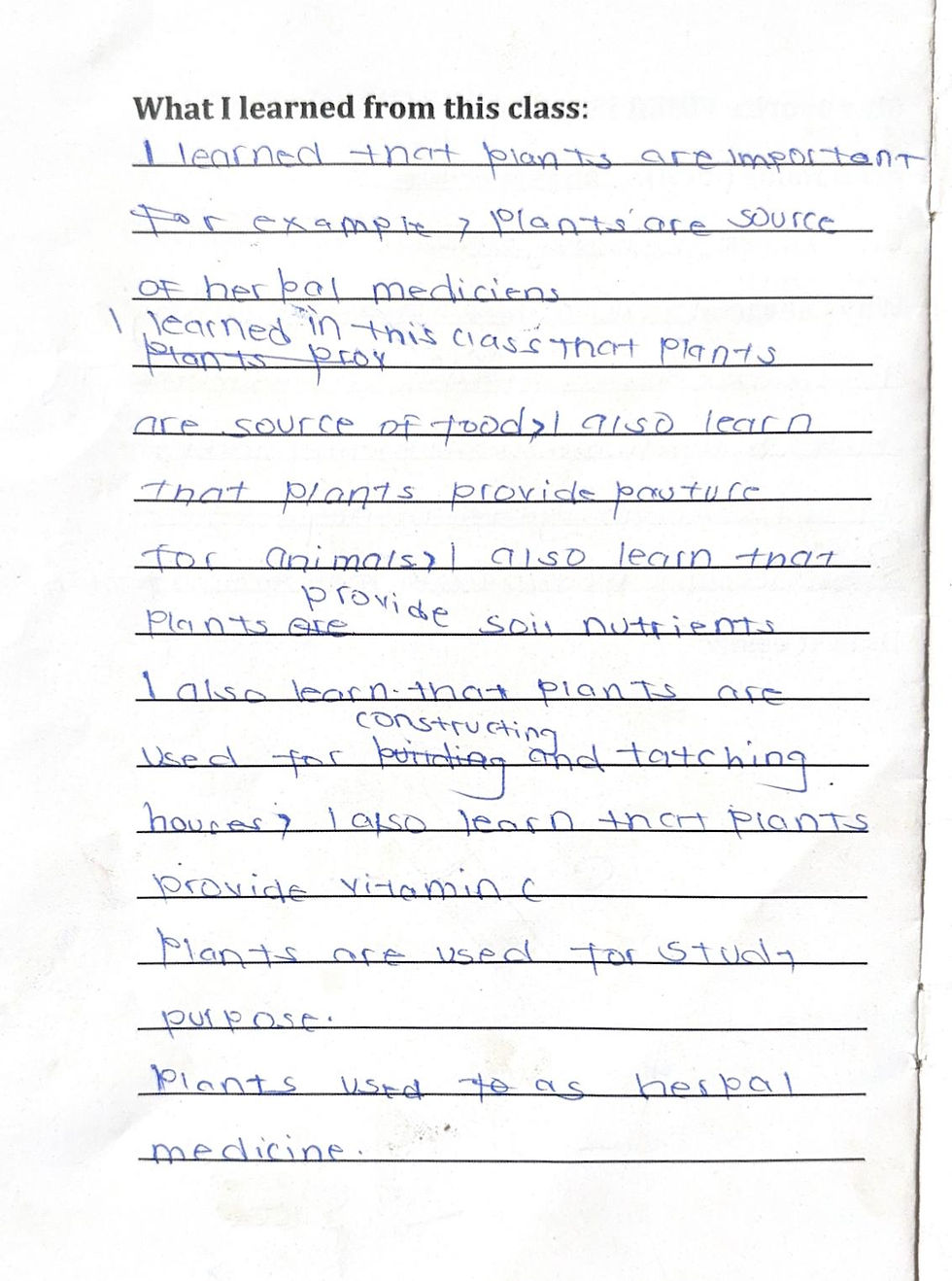July: School Program, Part Two
- Sarah Juster
- Jul 29
- 3 min read

Community plant experts Lilly and David share important fiber species with Torit Primary pupils
Dear All,
Welcome back, and I hope you are doing well! July has been a busy month for us here in Imvepi as we wrap up community feedback meetings and wind down our four-session forest biodiversity school program. We also check regularly on our Climate-Smart Agriculture field trials to measure soil moisture, soil temperature, and maize growth, including plant height and leaf number on selected plants.

Robilert and Alex flag and measure four maize plants within each treatment plot
School Program Session 3: Fiber
In the last post I introduced our forest biodiversity-focused school program which we are piloting with 30 refugee and host pupils in the Torit Primary School. The first two sessions focused important forest foods and medicines. In the last two sessions we focused on important forest fibers, and convened a tree-planting workshop with pupils and parents.
The forest fiber session was particularly engaging because we asked our community plant experts, Lilly and David, to bring examples of forest fiber products from home and demonstrate how they are used. Lilly brought Borassus aethipium, or African Fan Palm, leaves and demonstrated how she weaves baskets for winnowing grains. David brought strands of Grewia mollis bark, and one of the school teachers demonstrated how to braid rope after tying the bark onto his big toe.
A school teacher makes rope from Grewia mollis, and Lilly demonstrates Borassus palm basketry
At the end of the fiber session, the school teacher shared that as a child he used to weave baskets and braid rope, then sold those products to earn money for his own school uniform and books. So he urged the pupils to not discount the importance of forest fibers, and invited Lilly to return for follow up basketry lessons closer to the school break in December. As usual, we finished up with pupils indicating their favorite forest fibers with stickers on a large poster, and a brief writing assignment where they drew and explained the importance forest fiber species in their workbooks.
Lilly assisting a pupil with her writing assignment

Pupils identified most important forest fibers. Sida acuta for broom-making and Harrisonia abyssinica for granaries stood out
School Program Session 4: Tree Planting Workshop
For the last session of our program, we wanted to introduce pupils to the importance of tree planting. We emphasized that planted trees can help to relieve pressure on, and protect biodiversity within, forested areas and woodlands around Imvepi. We decided to invite parents for this final session so that pupils and parents could plant a tree together, and be responsible for taking care of it as it grows.
We asked teachers for a list of desired tree species to plant around the school compound, and they provided us with a list of indigenous and exotic trees (including Mahogany, Mvule, Mango, Papaya, and Jackfruit) which Robilert brought from nearby tree nurseries. Teachers and students prepared planting pits several days in advance, and we added leftover biochar from our CSA trials to each pit to improve soil quality.
After a brief in-classroom discussion, pupils, parents, teachers, and important community members including local council representatives and school board members gathered on the school grounds, and Robilert provided a thorough explanation of how to plant and maintain a tree seedling. We were also joined by refugee and host leaders of a community-based agroecology group, TRAYOL (Tree Replantation At Young Ornamental Level), who spoke about their important work promoting agroforestry and permaculture around Imvepi.
Robilert (top left) providing instructions on tree planting, parents and pupils planting trees together, and TRAYOL members (bottom right)
Our project concluded with a feedback meeting including teachers, parents, and community plant experts to hear about their experience with the program, and to ask for future improvements. A key recommendation was to add more sessions focused on how to harvest or prepare certain forest products, especially for food and fiber, and include more tangible demonstrations. We also held a brief focus group discussion with pupils to hear their feedback. Their suggestions included providing tee shirts they can wear to raise environmental awareness, and to help them organize a biodiversity club at school.
To conclude, I'll share a page from one pupil's booklet, reflecting on her major take-aways from the program. Thanks so much for reading, and I look forward to sharing another post soon!























Another chapter in my 'virtual journey'. Thank you, Sarah!